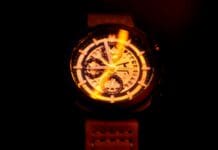This post is also available in:
 עברית (Hebrew)
עברית (Hebrew)
07First responder teams arriving at a disaster scene often don’t have access to the carrier-based terrestrial LTE network for connecting to all the different services they use. A new “bring your own service” solution could solve this problem.
Researchers at the Public Safety Communications Research Division of NIST – US National Institute of Standards and Technology’s – are testing deployable communication systems that could serve as mobile networks in regions that lack wireless infrastructure or are suffering from congested network traffic.
The research team, led by Maxwell Maurice, is working in collaboration with the Homeland Security Department’s Science and Technology Directorate. They got approval from AT&T FirstNet – America’s public safety communications platform – to conduct experiments on federal land in Colorado.
NIST wants to make generic technologies that are independent and completely self-contained readily usable by all first responders, as reported by gcn.com.
They started by using ground-based and truck-mounted deployable systems to create ad-hoc interoperable networks.
Deployable systems involve a computer capable of voice, texting and video streaming services and wireless technology such as Wi-Fi, LTE or an internet-of-things standard or protocol, Maurice said. Antenna masts extending 7 to 14 feet above the ground are also required. These systems let users host their own Wi-Fi access technology so that they can connect to their broadband services without having to rely on the internet.
Connectivity was checked by looking at signal strength indicated by the phone’s network bars — or just using the phone to see if the signal is strong enough, Maurice said.
A more data-driven method involved the use of a spectrum analyzer to measure the power of the channel that the deployable system provides and demodulating the LTE system to get more data. Team members wore backpacks outfitted with spectrum analyzers and used a computer to query them every 10 seconds to determine the signal. They walked around the area sometimes in line of sight of the deployable system and sometimes not.
The results were suboptimal, so the team began testing a drone carrying a commercial LTE network system. Hovering for 15 minutes at a time, the drone enabled line-of-sight connection from almost everywhere, which allowed for better connectivity and a bigger coverage area — about half a mile from the aerial platform.
Sam Ray, electronics engineer at NIST said: “We are focused on untethered UAS with self-contained communications systems, using multiple technologies,” he said. Current solutions, including those implemented by FirstNet, “use mostly tethered solutions with backhaul to core components using LTE,” he added.


























